
|
The Danes made their first appearance in India in 1618, when the Dansk Ostindisk Compagni (Danish East India Company) started operating under a royal Danish
charter. They reached an agreement with the Nayaka of Tanjore, receiving the port of Tranquebar and some surrounding area on an annual payment of 4,000 rupees. By the
following year the Danish castle of Dansborg had been built. Although the Danes subsequently did establish a few other settlements, Tranquebar remained their headquarters and
their only mint operated there. The Danes did not get involved in Indian politics at all, so they did not get drawn into any of the conflicts that raged in the country, but in 1807
Britain went to war with Denmark and British troops seized Tranquebar. Although it was restored to Denmark in 1814, the Danes eventually sold all their Indian possessions
(which had included the Andaman and Nicobar Islands) to the British.
|
 |
Frederik III (1648-70) |
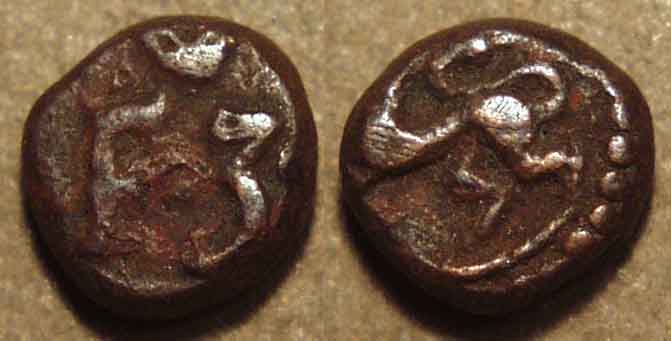
|
DANISH INDIA, Frederik III (1648-70) Copper 1-cash, Tranquebar
Weight: 0.65 gm. Diameter: 6-7 mm Die axis: 9 o'clock
Crowned F.3 monogram of Frederik III
Crowned Norse lion left, holding halberd
Reference: MNI 1542-43, KM 118.1, UBJ 143
|
 |
Christian V (1670-99) |
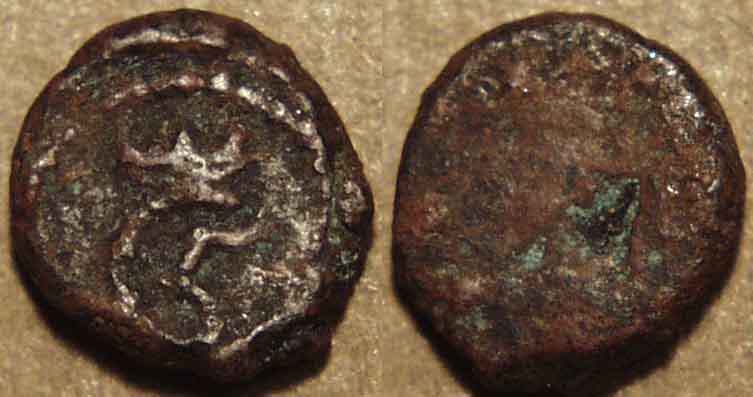
|
DANISH INDIA, Christian V (1670-99) Copper 1-cash, early uniface type, Tranquebar
Weight: 0.64 gm. Diameter: 9 mm Die axis: n.a.
Crowned C5 monogram of Christian V
Blank
Reference: MNI ---, KM 122, UBJ 188
|
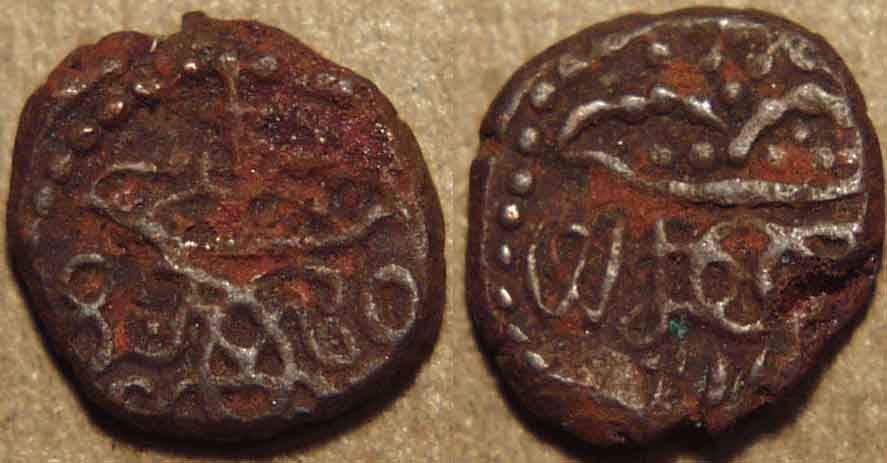
|
DANISH INDIA, Christian V (1670-99) Copper 1-cash, von Kalnein type, Tranquebar, 1689
Weight: 1.05 gm. Diameter: 10-11 mm Die axis: 7 o'clock
Crowned double C5 monogram of Christian V, separating last two digits of date: (16)8(9)
Crowned DOC monogram (Dansk Ostindisk Compagni) separating the letters W and H,
letters VK below
Reference: MNI 1550-51, KM 119, UBJ 190
|
 |
The WHVK on this coin stands for Wulf Heinrich von Kalnein, who served as Royal Commissioner in Tranquebar for a little over a year
(1686-87) during which he reaped tremendous profits for himself and the DOC through shrewd business moves, a re-opening of the slave trade, and privateering. So strong was
his reputation that his initials appeared on Tranquebar coinage years after he had returned to Denmark for good.
|

|
DANISH INDIA, Christian V (1670-99) Copper 1-cash, late type, Tranquebar, 1694
Weight: 0.80 gm. Diameter: 10 mm Die axis: 11 o'clock
Crowned double C5 monogram of Christian V, no date
Crowned DOC monogram (Dansk Ostindisk Compagni) separating the first two digits of
the date: 16, remaining two digits of date below: 94
Reference: MNI ---, KM 120, UBJ 195
|
 |
Frederik IV (1699-1730) |
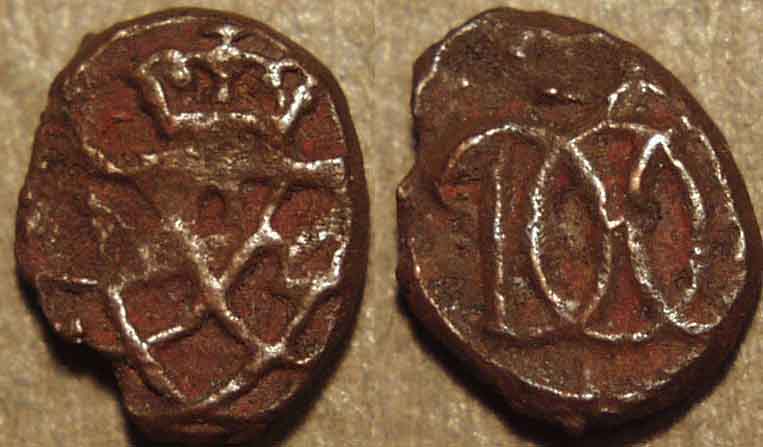
|
DANISH INDIA, Frederik IV (1699-1730) Copper 1-cash, double F4 type, Tranquebar
Weight: 0.89 gm. Diameter: 8-10 mm Die axis: 7 o'clock
Crowned double F4 monogram of Frederik IV
Crowned DOC monogram (Dansk Ostindisk Compagni)
Reference: MNI ---, KM 123, UBJ 207
|
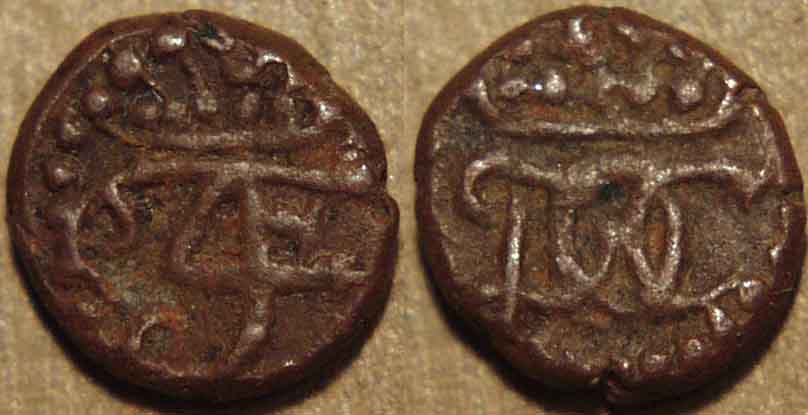
|
DANISH INDIA, Frederik IV (1699-1730) Copper 1-cash, single F4 type, Tranquebar
Weight: 1.03 gm. Diameter: 9 mm Die axis: 3 o'clock
Crowned F4 monogram of Frederik IV
Crowned DOC monogram (Dansk Ostindisk Compagni)
Reference: MNI 1555-56, KM 124, UBJ 208
|
 |
Christian VI (1730-46) |

|
DANISH INDIA, Christian VI (1730-46) Copper 1-cash, Tranquebar
Weight: 0.51 gm. Diameter: 9-10 mm Die axis: 10 o'clock
Crowned C6 monogram of Christian VI
Crowned DAC monogram (Dansk Asiatisk Compagni)
Reference: MNI 1559-61, KM 132, UBJ 221
|
 |
The Dutch East India Company (DOC) went bankrupt in 1729, a financial ploy to free the trade of its debts. The trading venture was
reestablished again in 1732 under the new name of the Dutch Asiatic Company (DAC), whose monogram is reflected on this coin.
|
|
|